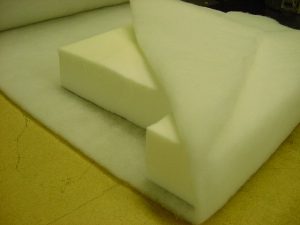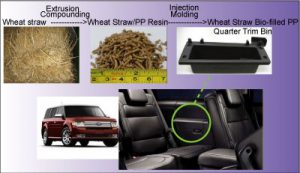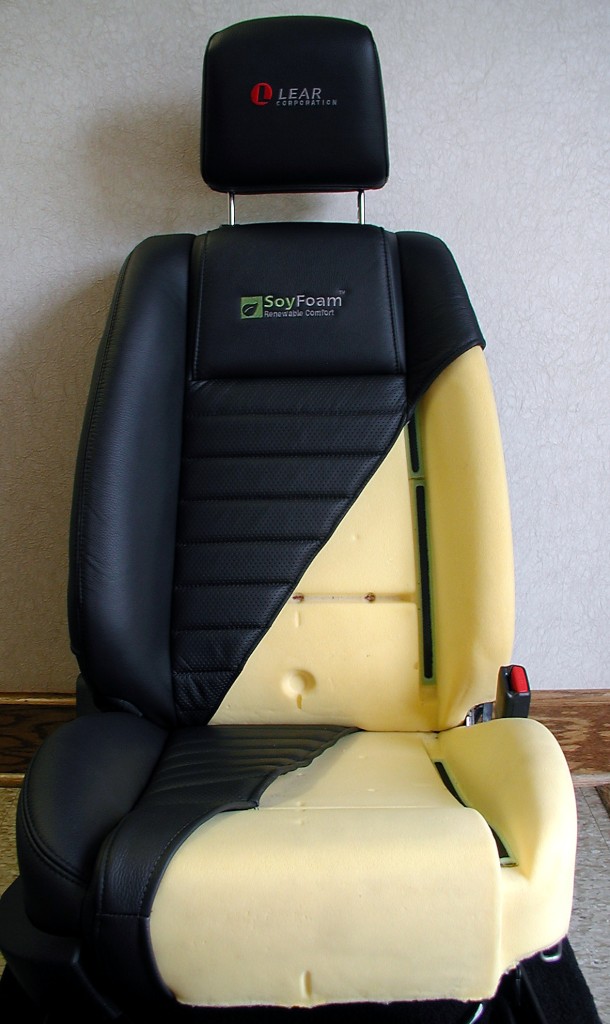The senior technical leader of materials sustainability at Ford Motor Co. Debbie Mielewski listed at the 2017 Refocus Sustainability & Recycling S
The senior technical leader of materials sustainability at Ford Motor Co. Debbie Mielewski listed at the 2017 Refocus Sustainability & Recycling Summit some uses this automaker has found for sustainable materials.
 Mielewski started the job of managing Ford’s plastic efforts in 2000 although she “hated” plastics and had a desire to make plastics better for the environment. This drove Mielewski and her team to create a foam made from soy which is now used in seat backs as cushions as well as in most of the headrests in the North American market.
Mielewski started the job of managing Ford’s plastic efforts in 2000 although she “hated” plastics and had a desire to make plastics better for the environment. This drove Mielewski and her team to create a foam made from soy which is now used in seat backs as cushions as well as in most of the headrests in the North American market.
Fords Model U concept from 2003 was the first to introduce the soy foam cushions, and it didn’t have a bad reception with the press. Mielewski said that Ford has been using soy in production since the 1940’s when soybean was used in paint. The commercialization of soybean use began in 2004 when United Soybean Board gave them a 175.000£ grant for a three-year research and analysis of soy foam. First commercial implementation of soy foam was in the 2008 Mustang, and it was very well- received. Mielewski stated that 31,252 soybeans are typically used in a Ford vehicle for seat backs and cushions. Ford’s “2015/16 Sustainability Report” showed that the use of soy foam reduces the company’s CO2 emissions by more than 20 million pounds a year.
Mielewski stressed that such improvements are not easy and that people need to be persistent. She said that she received incredible support from Fords chairman Bill Ford in the company’s work in sustainable materials as it was not an easy task especially given the fact that the company uses more than 1,000 different materials in their vehicles.
 Ford has also worked on the use of wheat straw-reinforced plastics, which was developed in cooperation with Canadian researchers. The first use of this plastic, which contains 20% wheat straw, was in 2010 Ford Flex and it reduced petroleum use by 20.000 pounds per year and CO2 emission by 30,000 pounds per year.
Ford has also worked on the use of wheat straw-reinforced plastics, which was developed in cooperation with Canadian researchers. The first use of this plastic, which contains 20% wheat straw, was in 2010 Ford Flex and it reduced petroleum use by 20.000 pounds per year and CO2 emission by 30,000 pounds per year.
Ford is working on replacing glass fibre with cellulose fibre as well, Mielewski said, and when it comes to recycled content, all of their vehicles contain a minimum of 25 percent post-industrial PET content as well as recycled post-consumer carpeting.
Ford usually does all the upfront work and finds suppliers to work with them on the final product, if there is a promise for an application. Mielewski said that there are many reasons for working on sustainable materials and mentioned expanded use of recycled and byproducts, decreased dependence on foreign petroleum, increased use of renewable and agricultural products and increased consumer awareness.




COMMENTS